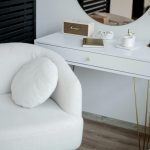Understanding Your Lifestyle and Home Needs
Personalizing your home starts with a clear understanding of your individual needs and daily routines. Everyone’s lifestyle shapes what a living space requires, so effective home personalization means tailoring design choices to support your habits and values. Begin by identifying key lifestyle factors: do you work from home, often entertain guests, or require quiet spaces for relaxation? Each aspect influences your home’s layout and décor preferences.
Assess your current home critically. Are there spaces that feel disconnected from your daily life or do not reflect your personality? Spotting these gaps allows you to explore opportunities for a unique home design that feels truly yours. Prioritize changes based on activities that dominate your day—whether that’s cooking, working, or hobbies. Personalization guided by your routine ensures your space functions optimally and brings comfort.
Also to discover : How Can UK Homeowners Enhance Their Gardens for Increased Biodiversity?
Combining your interests with practical needs results in a home where style meets purpose. This lifestyle-based design process supports both functionality and personal expression, transforming a generic house into a reflection of who you are. Building your environment around individual needs creates not just a house, but a home.
Understanding Your Lifestyle and Home Needs
Your home personalization journey begins with a clear understanding of how your lifestyle shapes your environment. Recognizing the specific factors that influence your daily routine and preferences is essential to creating a unique home design that truly reflects your individual needs. For instance, a family with young children might prioritize safety and ample play areas, while a remote worker may focus on creating an efficient, inspiring workspace.
Also to see : What are innovative ideas for a sustainable UK garden?
Assess your current living space carefully by observing how well it supports your habits and values. Are there areas that encourage relaxation, productivity, or socializing? Identifying these zones helps pinpoint opportunities to better tailor your home. Lifestyle-based design is all about aligning your surroundings with what matters most to you, whether it’s hosting gatherings or pursuing hobbies.
Prioritizing personalization means placing your daily activities and personal taste at the forefront of design decisions. This approach ensures that every room serves a purpose aligned with who you are and what you do. By focusing on these individual needs early in the planning stage, you lay the groundwork for a cohesive and meaningful space that feels distinctly yours.
Choosing Personalized Décor and Color Schemes
Personalizing your home goes beyond functionality; it thrives on expressing your personal style through décor styles and color palettes. Choosing décor that resonates with you means incorporating favorite colors and meaningful objects. For example, if you love warm tones, selecting rich reds or deep oranges for textiles or wall art can create a cozy atmosphere while reflecting your taste.
Adapting popular décor styles such as modern, rustic, or eclectic can be tailored to fit your personality rather than following trends rigidly. Modern décor might use sleek lines but softened with handcrafted accessories, while rustic themes can blend natural materials with contemporary comforts. The point is to mold these styles into something uniquely yours, enhancing your home personalization.
Artwork, textiles, and accessories serve as excellent tools for adding distinctive touches. A carefully chosen piece can evoke emotions and memories, reinforcing your lifestyle-based design. Textured cushions or patterned rugs introduce sensory depth, making spaces inviting and aligned with your individual needs. Thoughtful integration of décor styles and color palettes is central to creating a unique home design that feels both authentic and welcoming.
Choosing Personalized Décor and Color Schemes
Selecting the right décor styles and color palettes is key to home personalization, reflecting your personal style throughout the space. Start by incorporating favourite colours that evoke positive emotions or hold personal meaning. For example, calming blues might work well for relaxation areas, while energizing reds can suit activity rooms. Applying these colors strategically adds cohesion and character.
Adapting popular décor styles like modern, rustic, or eclectic enables you to create a unique home design that complements your personality. A rustic theme could highlight natural materials and warm tones, whereas modern schemes focus on clean lines and minimalism. Don’t hesitate to blend elements from multiple styles to tailor the aesthetic precisely to your tastes.
Using artwork, textiles, and accessories offers countless options for customization. Meaningful objects—such as family heirlooms or travel souvenirs—can be displayed to tell your story visually. Similarly, patterned cushions, rugs, or wall hangings enhance texture and add personal flair. Thoughtful décor choices bring energy and identity to your home, making it a true extension of who you are.
Understanding Your Lifestyle and Home Needs
A successful home personalization begins by pinpointing key lifestyle factors shaping your environment. Ask yourself: What daily activities define your routine? Do you value quiet reflection, social gatherings, or creative projects? Recognizing these influences is crucial to shaping a unique home design that aligns with your individual needs.
Assess your current home by reviewing how well each space supports your lifestyle. Are your work zones organized for focus? Do living areas encourage relaxation or connection with guests? Noticing gaps shows where personalization can enhance both function and comfort. For instance, integrating calming colors in a busy household or creating an adaptable workspace for remote work reflects deliberate lifestyle-based design choices.
Next, prioritize customization based on your daily habits and taste. Focus on rooms and features that dominate your day—whether it’s a kitchen for cooking enthusiasts, a cozy nook for readers, or an open area for entertaining. This method ensures your home is not just aesthetically pleasing but deeply practical. Embracing individual needs in this planning phase fosters a cohesive, functional, and inviting space tailored just for you.
Designing Functional Layouts for Daily Living
Creating a functional design tailored to your daily routine is essential in achieving effective home personalization. Start by assessing how you use your space. Are there frequent activities that require specific zones? Arranging furniture to support these activities improves flow and convenience. For example, positioning a work desk near natural light enhances productivity, while placing seating areas to encourage social interaction fosters connection.
A personalised layout often includes multi-purpose zones that serve various needs, such as a guest room doubling as a hobby studio or a dining area that transforms into a workspace. This flexibility accommodates changing lifestyles and maximizes limited space without sacrificing comfort or style.
Effective space planning integrates storage solutions that align with your habits, promoting a clutter-free environment. Customized shelving or hidden compartments help keep essentials organized and within reach, reducing stress and increasing efficiency.
By focusing on these practical elements, your home becomes a supportive backdrop to your life, balancing form and function. Thoughtful functional design complements your unique daily patterns, allowing your space to adapt and evolve with you. This approach ensures your individual needs remain central to every layout decision.
Understanding Your Lifestyle and Home Needs
Personalizing your home starts with carefully identifying lifestyle factors that shape your everyday environment. These may include your work habits, social activities, or relaxation preferences. For example, frequent entertainers benefit from open living areas, while introverts may need quiet retreats. Recognizing these influences allows you to focus on lifestyle-based design that supports rather than hinders your routine.
Assess your current home to find spaces that either enhance or detract from your way of living. Which rooms feel functional, and which seem underused? Notice if your environment reflects your individual needs such as storage for hobbies or areas that accommodate family dynamics. This evaluation uncovers opportunities to turn generic rooms into a unique home design tailored for you.
Prioritization is key: align personalization efforts with the activities that dominate your daily life. Whether it’s a kitchen built for cooking enthusiasts or a workspace optimized for concentration, placing your habits front and centre ensures your home delivers comfort and purpose. Thoughtful choices guided by lifestyle and individual needs transform your house into a genuinely personal sanctuary.
Understanding Your Lifestyle and Home Needs
Understanding your individual needs is crucial for effective home personalization. Begin by identifying lifestyle factors that influence design choices. Ask: What daily activities define your routine? Do you prioritize quiet spaces, social zones, or creative work areas? These factors shape how a unique home design supports your life.
Next, assess your current home objectively. Look for rooms or corners that don’t reflect your lifestyle or values. For instance, a cramped kitchen for a cooking hobbyist signals a need for redesign. Spotting such opportunities helps tailor spaces to your habits and preferences, enhancing both function and comfort.
Prioritizing personalization requires focusing on areas essential to your daily routine and personal taste. If you often work remotely, an ergonomic workspace might take precedence. Conversely, if social gatherings are frequent, creating inviting seating zones becomes key. Embracing a lifestyle-based design ensures your home feels authentic and practical, harmonizing your environment with what matters most to you.
Understanding Your Lifestyle and Home Needs
Identifying your lifestyle factors is the cornerstone of effective home personalization. These include your daily routines, work habits, social life, and relaxation preferences. For example, if you frequently host gatherings, an open-plan layout may enhance social flow. Conversely, someone valuing solitude might prioritize quiet spaces. Understanding these nuances ensures your unique home design truly supports your individual needs.
Assessing your current home involves observing how well each space functions for you. Are rooms serving the purposes aligned with your routine? If your kitchen feels cramped or your living area lacks comfort, these are opportunities for improvement. Noticing mismatches helps target areas where personalization can enhance daily living and reflect your values.
Prioritization based on your habits and personal taste guarantees the most meaningful impact. Consider which activities take precedence—cooking, working, or relaxing—and tailor your space accordingly. This intentional focus on lifestyle-based design enables your home to become not only visually appealing but also highly practical. By integrating these factors, your personalized home becomes an authentic extension of yourself.











